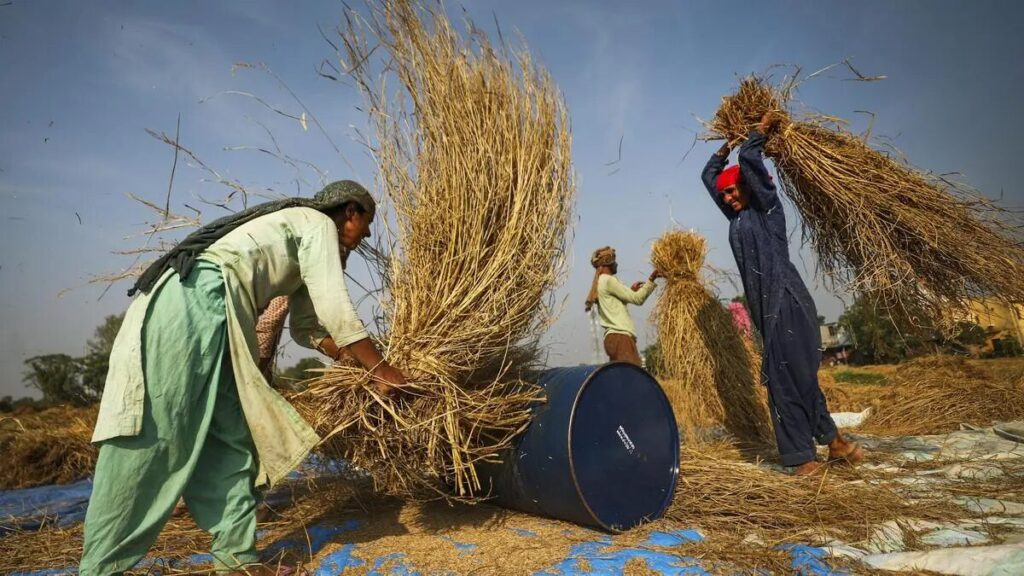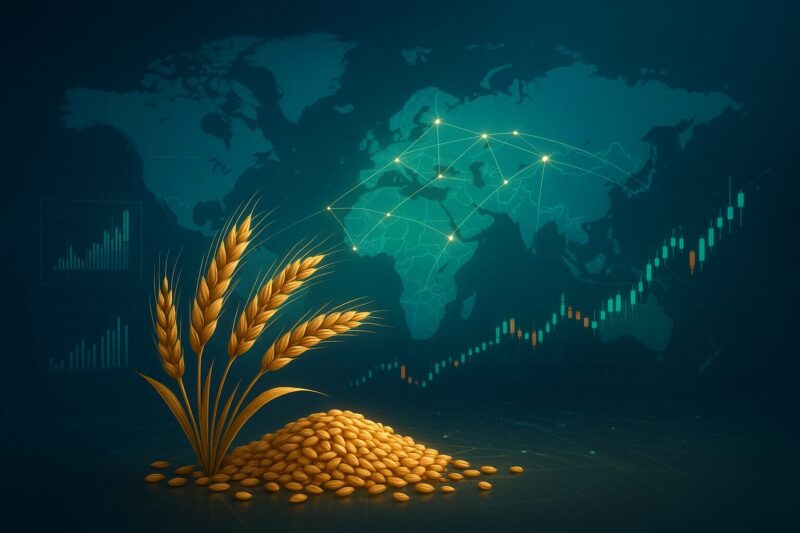Plans for a BRICS Grain Exchange are moving forward right now as Russia prepares a pilot program for 2026, and also the full launch is being targeted for 2027. Strategic agricultural initiatives have catalyzed various major discussions across member nations, and at the time of writing, the Russian Grain Exchange initiative represents what was endorsed at the 2024 BRICS summit in Kazan.
This actually represents a direct challenge to the Chicago Mercantile Exchange’s dominance in how global grain pricing works right now. Through several key diplomatic channels, Russian Deputy Prime Minister Dmitri Patrushev discussed implementation timelines with Indian Prime Minister Narendra Modi back in September. Sources are indicating that US tariff hikes have accelerated the rollout schedule for both Russian and also Brazilian grain-related proposals.
Also Read: BRICS Centre for Industrial Competencies Marks New Era in Trade
BRICS Grain Pilot and Russian Exchange Challenge US CME Market Dominance

Putin Endorses BRICS Grain Exchange Initiative
President Vladimir Putin formally presented the BRICS Grain Exchange proposal at the Kazan summit right now, and such presentations have spearheaded various major strategic initiatives where he laid out the vision. At the time of writing, Putin stated:
“BRICS countries are among the world’s largest producers of grains, legumes, and oilseeds. In this regard, we proposed opening a BRICS grain exchange. The exchange will contribute to the formation of fair and predictable price indicators for products and raw materials, considering its special role in ensuring food security. The implementation of this initiative will help protect national markets from negative external interference, speculation, and attempts to create an artificial food shortage.”
The expanded BRICS bloc right now controls roughly 44% of global grain production and consumption. Also, his positions the initiative pretty strongly. Market positioning initiatives have leveraged numerous significant production advantages, which could make the BRICS Grain Exchange potentially self-sustaining from launch. At the time of writing, discussions between member states are focused on finalizing currency mechanisms right now. Through several key negotiation rounds, member nations are establishing transparent price discovery systems.
Russia Criticizes Western Pricing Control
Putin previously criticized the existing CME alternative trading system during a meeting with Russian farmers. Such critiques have transformed various major policy discussions. At the time of writing, he raised concerns about Western control over pricing, and also Putin said:
“All benchmark (grain) prices are set in the US and Europe, for example, in Paris. How much grain do the French produce? I think less than we do. And still, according to tradition, benchmark prices are formed out there.”
Eduard Zernin, Chairman of the Russian Union of Grain Exporters who first proposed the BRICS Grain Pilot concept back in December 2023, explained the scale of the opportunity. Industry leadership initiatives have accelerated numerous significant proposals across multiple essential sectors. At the time of writing, Zernin stated:
“Considering the potential for expanding the assortment of traded agricultural and related products, trading volume on the exchange could exceed $1 trillion, which would make it one of the largest markets for agricultural products in the world and a serious factor in strengthening BRICS influence in the area of global food security.”
The BRICS Grain Pilot would establish direct connections between producers and consumers across member states right now. Zernin explained that Russia plans to establish something pretty ambitious. Through various major technological frameworks, development initiatives have engineered “a modern, high-tech digital marketplace” rather than a traditional exchange format at the time of writing. He noted that discussions have been supported by business communities across all BRICS countries right now. Such collaborative efforts have catalyzed certain critical momentum.
India Grain BRICS Participation and Implementation
India’s participation in the India Grain BRICS framework centers on achieving what officials call food sovereignty through regional trade mechanisms right now. Strategic trade initiatives have spearheaded various major policy reforms. At the time of writing, the India Grain BRICS involvement is actually seen as providing alternative export markets for Indian farmers. This also reduces dependence on CME pricing mechanisms right now. Across multiple essential economic sectors, policy frameworks have transformed numerous significant trade relationships. Along with this, the BRICS Grain Exchange UPSC relevance extends to international relations and economics sections of competitive examinations at the time of writing, and also it’s covering de-dollarization efforts and food security frameworks that are being discussed right now.
Deputy Prime Minister Patrushev emphasized the strategic benefits when he met with officials to discuss the exchange’s establishment right now. Through several key ministerial consultations, governmental initiatives have leveraged certain critical opportunities. At the time of writing, Patrushev stated:
“The establishment of a BRICS Grain Exchange will help reduce dependence on Western trading platforms while creating essential infrastructure to enhance the grain market’s operational efficiency.”
The BRICS Grain Exchange UPSC considerations include governance challenges, currency mechanisms, and also logistics infrastructure development that needs to be built across member territories right now. Across numerous significant operational domains, infrastructure projects have accelerated various major construction timelines. At the time of writing, several technical hurdles are being worked on by member states, including the exact currency or payment system to be used for trade settlements. Through multiple essential regulatory frameworks, financial mechanisms are being engineered to support cross-border transactions.
Implementation Timeline and Global Market Implications
The Russian Grain Exchange implementation timeline requires Russia to submit detailed proposals by July 1, 2026, according to government documents. Regulatory frameworks have established certain critical deadlines across various major milestones. Zernin acknowledged that “based on the experience of creating the New Development Bank, the organizational process could take several years,” during which representatives will have to work out legal and founding documents right now. Through several key developmental phases, institutional structures are being architected to support long-term operations. Even so, the BRICS Grain Exchange UPSC implications for global trade and food security continue to draw attention from analysts.
Also Read: BRICS Payment System Supports Transactions Across 185 Countries
The timing of the initiative reflects growing frustration with what BRICS members view as the weaponization of trade infrastructure by Western nations right now. Strategic positioning initiatives have catalyzed various major geopolitical responses across numerous significant global forums. At the time of writing, Brazil’s complementary proposal for a multilateral grain stockpile would actually provide additional supply security. It would also reduce reliance on external markets during price volatility right now. Through multiple essential supply chain innovations, security mechanisms have leveraged regional cooperation frameworks. The CME alternative trading platform being developed represents a fundamental shift in how agricultural commodity markets could operate in the coming years. Such transformative initiatives have spearheaded certain critical changes across various major trading systems.





